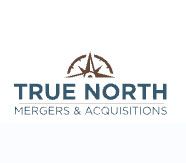What Your Company Can Expect During the Merger or Acquisition Process

True North Mergers & Acquisitions
September 20, 2023

Mergers and acquisitions are high-stakes transactions that offer a critical path to growth and market expansion. Yet, beneath the allure of these potentially rewarding deals lies a complex and unpredictable journey.
Below, we've distilled the intricate merger and acquisition process to help you mitigate risks, avoid non-compliance penalties, navigate potential delays, and address other issues that may arise during the process.
Developing a Strategy
Each merger and acquisition deal is unique, but they should all begin with a strategy that takes the following into account:
Purpose: What is the core purpose of your merger or acquisition? You may be looking to increase your market share or gain access to new customer segments. Or maybe the primary goal is to acquire intellectual property or patents that can enhance your product offerings or improve efficiency. Clearly defining your purpose aligns the entire organization and helps you evaluate whether the potential deal matches your goals.
Financing: How will you secure the funds for the deal? If you’re using the company’s cash reserves, this may impact your liquidity and operations. Plan accordingly. If you’re financing, assess the long-term implications of carrying this debt.
Operating Model: Visualize what the organization looks like post-acquisition. How will the merger impact daily operations? Will there be layoffs, new hires, or restructuring? Do you share a similar culture with the company you are merging with? These are all critical questions to consider.
Target Identification
In this merger or acquisition phase, you begin hunting for potential companies that align with your strategy. It can be as easy as identifying your target company for the less complicated mergers. More complex transactions, like triangular mergers, may require identifying the target company and other subsidiary entities.
During this stage, conduct your due diligence. You’ll want to know what the subsidiary or connected companies do, where they operate, and whether they are qualified to do business in different regions.
Valuation & Negotiations
During the merger or acquisition valuation and negotiation process, both parties collaborate to determine the target company’s value. These negotiations usually center around financial data, market conditions, and cultural fit.
The goal is to reach a consensus on the purchase price, payment terms, and other contingencies. And once the terms are settled, formal legal documentation is drawn up to solidify the deal.
It’s worth noting that this phase of the merger or acquisition requires careful attention to detail to protect the interests of both parties and ensure a smooth transition.
Conducting Due Diligence
Now it’s time to dig into the target company’s financial records, contracts, legal matters and find out how they run their business. This ensures that you eliminate surprises and potential risks. During this transaction stage, financial, legal, and industry experts work together to ensure all parties know exactly what they’re getting into.
Closing the Deal
It’s decision time. If you decide to proceed with the deal, your legal team will file corporate or pre-clearance filings, update necessary documents, and ensure all legal requirements are met.
Financing & Restructuring
If you are financing the deal, you've already explored your options during the planning process. However, this is when you finalize decisions on loans, equity, or other financing options.
In this phase, you will also file UCC1 and UCC3 forms. Following this, you will conduct post-closing searches to verify that the UCC filings are properly recorded. This is critical in ensuring legal compliance and asset protection.
Integration
After the deal is closed, it's time to merge the acquiring and target companies’ operations, systems, and teams.
This means aligning processes, technology, and organizational structures. During the integration process, you must retain and integrate new talent, maintain customer relationships, and anything else to ensure a smooth transition.
Let’s Connect
At True North Mergers & Acquisitions, we help business owners identify and prioritize their objectives for their businesses, employees, and families. If you’re ready to talk about your goals for the future and get insights for achieving them, we’d be happy to sit down and talk with you. Contact us today to get started!
Subscribe to our Newsletter
Sign up for the latest industry insights from True North Mergers & Acquisitions.

SELLING A BUSINESS
How Do I Get My Tech Business Ready to Sell? Understand These Factors Before You Sell Your Tech Business

PLANNING
How to Jumpstart the Planning Process Following a Process Ensures Positive Results

SELLING A BUSINESS
If You Don’t Uncover the Skeletons in Your Closet, Your Buyer Will Don’t Miss This Important Step in Selling Your Business


